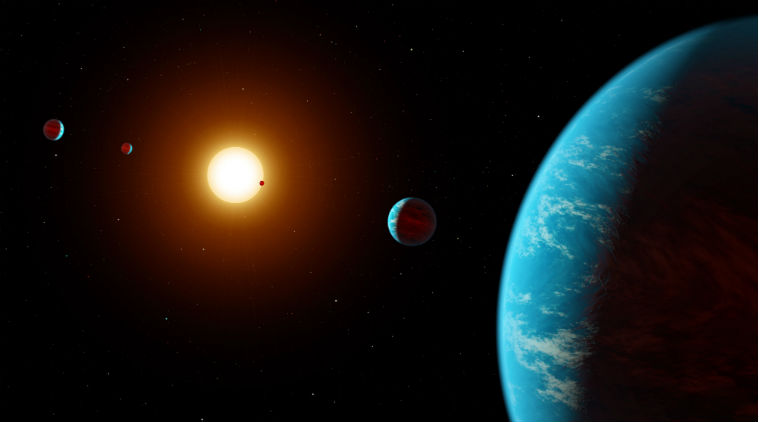
Scientists have analysed two recently discovered exoplanets that have similar sizes but very different densities, and may offer a unique insight into how worlds are formed. Kepler-107b and Kepler-107c have almost identical radii of 1.5 and 1.6 Earth radii, but their densities that are over twice as different, researchers said.
Scientists from Italy’s National Institute for Astrophysics (INAF) and University of Bristol in the UK spent three years observing the exoplanetary system Kepler-107 via the Telescopio Nazionale Galileo in La Palma. They gathered more than a hundred spectroscopic measurements of all four sub-Neptune mass planets in Kepler-107 — named after the NASA Kepler space telescope that discovered the exoplanetary system five years ago.
Unlike Earth’s relation to the Sun, the planets in the Kelper-107 system are much closer to each other and their host star (their equivalent of our sun). All of the planets have an orbital period of days as opposed to years. It is not uncommon for the planet that is closest to the host star to be the densest due to heating and interaction with the host star which can cause atmosphere loss.
However, in the case of Kepler-107, the second planet, 107c, is denser than the first, 107b, according to a study published in the journal Nature Astronomy.
So much so that 107c contains in its core an iron mass fraction at least twice as large as that of 107b, indicating that at some point, 107c had a head-on high-speed giant collision with a protoplanet of the same mass or more collisions with multiple planets of a lower mass.
These impacts would have ripped off part of the rock and silicate mantle of Kepler-107c, suggesting that it is denser now than it was originally.